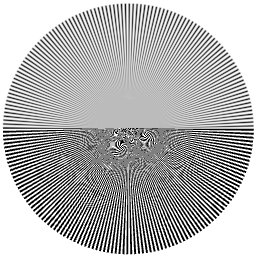Get the latest tech news
Monsky's Theorem
\(\newcommand{\RR}{\Bbb R} \newcommand{\QQ}{\Bbb Q} \newcommand{\ZZ}{\Bbb Z}\) For which \(n\) can you cut a square into \(n\) triangles of equal area? This question appears quite simple; it could have been posed to the Ancient Greeks. But like many good puzzles, it is a remarkably stubborn one.
Despite the completely geometric nature of the question, his proof relies primarily on number theory and combinatorics! Proof: First, we establish a lemma: a triangle \(T\) is trichromatic iff its faces have an odd number of purple segments. If that face contains green at all, then by the first property of Sperner colorings, it can’t ever have purple segments, as it must omit either red or blue vertices.
Or read this on Hacker News

